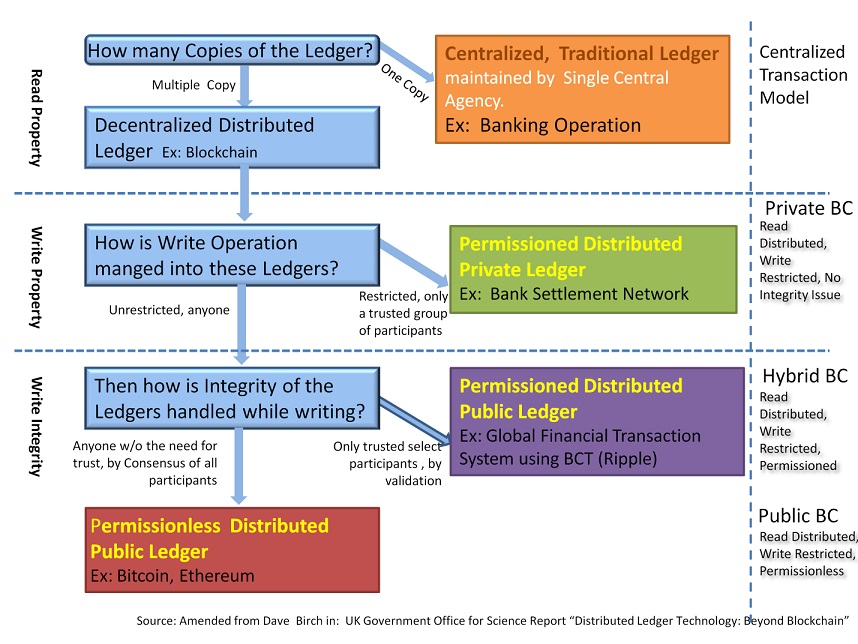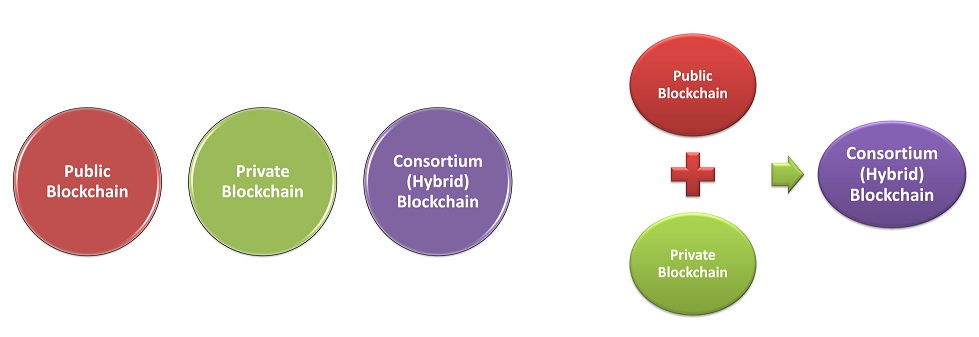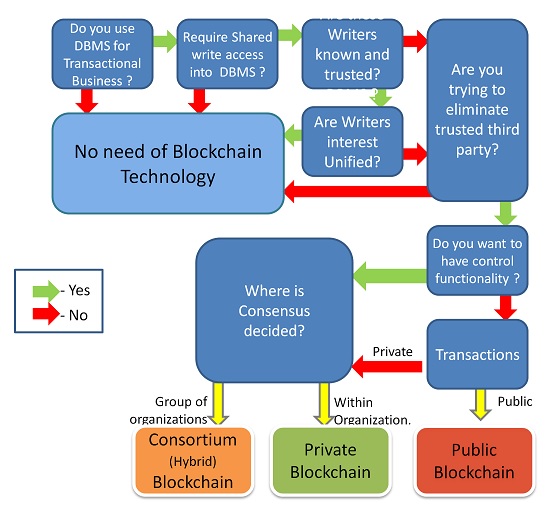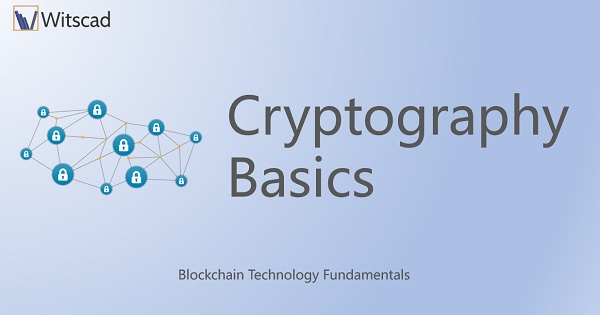We have already discussed the functional requirements, emergent properties, and consensus mechanism. Taxonomy is about the systematic classification of something; here we deal with Taxonomy of Blockchain i.e the classification of Blockchain based on the rights of the nodes in dealing with Distributed Ledger of the Blockchain network.
Access and Control Issues
This taxonomy is about the Distributed Ledger Construct which results in authorization and control policy governance. In a Blockchain network, there is a set of rules to manage users, systems, and nodes to follow security-related activities. These rules enable or restrict users' access to blockchain resources including data. The basic issues to be addressed by these rules are as follows:
- Who all can read the ledger?
- Who all can write on to the ledger?
- Who monitors consensus and hence integrity of the ledger?
These issues addressed differently based on the core business model, result in different technological models like Centralized Traditional Ledger, Distributed Permissioned Public Ledger, Distributed Permissioned Public Ledger and Distributed Permissionless Public Ledger as in Figure 6.1. Also, this figure partly answers the question of "why do I need a Blockchain solution?”. The question of how many replicated copies of the ledger required demarcates the need for Centralized or Distributed architecture for the solution approach. The number of replicated copies and access to those copies increases transparency in the system. At the next level, based on the write authority of the members, the Private and the Public Distributed Blockchain division happens. The integrity policy of the network defines the blockchain to be Public Permissionless and Permissioned. Further, the properties of the derived ledgers are highlighted in the rightmost column in figure.6.1. Please be reminded that Blockchain uses distributed ledger technology (DLT). So what is said for DLT applies to Blockchain Technology too.

But then Public and Private Blockchain differ in the way the above features are handled. i.e. Who can become a member of the Peer Network, who or who all can execute the consensus protocol and write into the shared ledger. There is also a need to be in between public and private, hence the Consortium (Hybrid) Blockchain. Thus the resultant popular access control based Taxonomy of Blockchain Technology is Public, Private and Hybrid as shown in Figure 6.2.

Taxonomy of Blockchain Technology
Public Blockchain
Public Blockchain is fully distributed and Open. Anyone can join the Peer Network and become a member. A person can simply download the protocol of the network, install in his system; when he gets connected on the internet he becomes a member without the need to reveal his identity. There is no sole ownership but generally incentivized to its members so that more members join the network. The consensus process is open to all and everyone is eligible to participate. To achieve consensus, each node must solve a complex and computationally resource-intensive cryptographic puzzle and submit a Proof of Work. The first one to submit PoW is said to be the miner of the Coin and writes to block with ownership. Bitcoin is the largest Public Blockchain for Cryptocurrency applications.
The disadvantage of Public BC is its high resource requirement. The miners (nodes) own high power systems configured with GPU, ASIC, etc. By its characteristics discussed above, Public BC is known as permissionless. The privacy and security in Public BC are weak due to its openness. Public BC characteristics can be summarized as Open, trust-free, slower, transparent and legal.
Private Blockchain
One can become a member by invitation of the starter of the Network or should meet the rules set by the starter to be eligible to join the network. Thus this Private BC is called Permissioned BC and it is a Closed type of network. Businesses start the network and invite or approve members. Identities of the members are known. This is a kind of Distributed Network but the powers are centralized. The consensus mechanism is concentrated in one hand and hence single ownership for block creation. Private BC uses the setting for Access Control. Public BC is said to be faster, privacy rich, trusted, managed, scalable and legal.
The use of Private Blockchain is prevalent and advantageous to industries that have to meet regulatory constraints. Ex: Power Distribution, Intellectual Property Rights Control, Publication Industry, etc.
Hybrid or Consortium Blockchain
Hybrid BC is a kind of both public and private Blockchain. In the sense, it is a Distributed framework but public only to select member groups. These member groups form the consortium. Unlike the case of Private BC, the consensus happens among on select servers of the groups which are preselected. Identities of preselected members are only known. The sub members of these groups are not known. Thus this Hybrid BC is partly Centralized and partly decentralized. But this is a Permissioned Public BC.
Ripple’s Cross Border Currency clearing system and Inter-Bank Payments are examples of Consortium Blockchain.
Comparison of Blockchain Taxonomy
| Characteristic | Public Blockchains | Private Blockchains | Hybrid (Consortium) Blockchain |
|---|---|---|---|
| Participation | Permissionless | Permissioned | Permissioned |
| Central party | No central Admin | Has some degree of external administration | |
| Membership | Anyone can join | Only invited participants can join the network | Anyone can become a member with restricted access |
| Level of Trust | Network members are not required to trust each other | A higher degree of trust among members required | Part of the network is a trusted type |
| Openness | Ledger is open & transparent – shared between all network members | Different degrees of openness and transparency of the ledger are possible | Ledger is Open and Transparent to Select group of members |
| Security | Weak or notional | Access control allotted by Administrator | |
| Identity | User identity anonymous or protected by pseudonyms | Identity verification typically required by the owner/administrator | Select group members Identity known; subgroup members may be anonymous |
| Consensus Mechanism | Proof-of-Work required | Variety of consensus mechanisms possible | |
| Consensus Participation | All Miners | The master organization | Select set of nodes by Hierarchy |
| Transaction Asset Type | Typically: native cryptocurrencies | Any asset | Cross border Transactions |
| Legal ownership | No legal entity owns or controls the ledger | Owner/administrator is the legal entity | A select set of nodes |
| Read Permission | Public | Public or restricted | Public or restricted |
| Tamperproof | Nearly impossible to tamper | Collaboration among members could alter the ledger | As high as Public Network |
| Type of network | Distributed, Decentralized P2P | Distributed, but more centralized control | Distributed, Partly centralized and partly decentralized control (Hierarchical) |
| Energy Efficiency | Low | High | High |
| Computational Resource | Extremely high | Moderate | Moderate |
| Transaction throughput | Poor | Higher | |
| Network size | large scale network | A smaller scale of networks | Medium Scale Network |
| Examples | Bitcoin, Ethereum | R3’s Corda, Hyperledger Fabric | Ripple |
The so far discussed, the Access Control Mechanism based Taxonomy of Blockchain is the most popular one. However, a taxonomy can be defined based on other characteristics of the Blockchain too. For example, based on Consensus Process the classification would be Decentralized, Centralized and Hierarchical. Similarly, classification can be done on Scalability, Transaction thruput, Asset handling, Governance, etc.
When do we need Blockchain Solution?
This is also a sum up of our ongoing discussion. Figure 6.3 clarifies the need for Blockchain and the suitability of the type of Blockchain as a decision-making process with suitable questions being answered. The figure also clearly brings out a case for "No need for Blockchain Technology".

References
- Zheng, Z., Xie, S., Dai, H. N., Chen, X., & Wang, H. (2018). Blockchain challenges and opportunities: a survey. International Journal of Web and Grid Services, 14(4), 352-375.
- Fintech Note No.1, "The Distributed Ledger Technology (DLT) and Blockchain", 2017, Worldbank Group.

